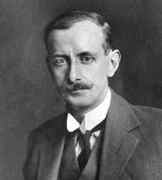Person: Watson (3), Henry William

Neville Watson studied at Cambridge, and then taught at Cambridge and University College London before becoming Professor at Birmingham. He is best known as the joint author with Whittaker of one of the standard text-books on Analysis.
Mathematical Profile (Excerpt):
- Let us say a little about Westward Ho! where Neville was born.
- The census form shows that Neville and his parents had two servants, a nurse Clara Carter (age 23) and a general servant Mary Ann Hocking (age 20).
- Neville was educated at St Paul's School in West Kensington, London, entering as a Foundation Scholar in 1898.
- He mixed with equally outstanding pupils, for J E Littlewood, less than a year older than Watson, was also a pupil at the school.
- At this time there were three young fellows of Trinity all of whom had a major influence on Watson's mathematics.
- Whittaker left Cambridge in 1906, two years after Watson arrived, and although his influence at this time was slight, he became an important collaborator and friend some years later.
- After election to his Trinity fellowship, Watson spent four further years in Cambridge before leaving to take up an assistant lectureship in University College, London.
- All this development took place at the same time that Watson was also carrying out an enormous amount of work outside the University.
- Watson worked on a wide variety of topics, all within the area of complex variable theory, such as difference equations, differential equations, number theory and special functions.
- In 1922 Watson published The theory of Bessel functions which was another masterpiece.
- With Professor Watson we reached the period when the mystery is dispelled though the wonder remains.
- One piece of work undertaken by Watson deserves special mention.
- Although Watson was not interested in how best to model the situation, he was, however, very interested in using his expertise to determine mathematical solutions to the given model which others might then check against observations.
- This layer in the atmosphere, now called the Heaviside layer, was only a conjecture in 1918 but it was suggested to Watson that, having shown the previous model to be wrong, he now looked at the model resulting from the postulated Heaviside layer.
- Watson showed that if the layer was about 100 km above the Earth's surface and it had a certain conductivity, then indeed the solutions obtained closely matched observations.
- That Heaviside, and Watson, were correct was confirmed in 1923 when the existence of the layer was proved experimentally when radio pulses were transmitted vertically upward and the returning pulses from the reflecting layer were received.
- Watson undertook a major project by examining in detail Ramanujan's notebooks, extending his results and supplying proofs.
- Watson was also very active in his support for the London Mathematical Society.
- Watson was a great believer in going to the original works of the great mathematicians, rather than to their interpreters, and he also had the great gift of clarifying the sometimes obscure material of others.
- We learn something about Watson's beliefs when we look at his record of attendance at International Congresses of Mathematicians.
- For a version of Watson's report on the 1932 ICM, see .
- To his horror, Watson's widow showed him a room in their house, devoid of furniture, knee deep in unpublished manuscripts.
- These included a massive, but incomplete further edition of the Whittaker and Watson textbook, a monograph on 'Three Decades of Midland Railway Locomotives' and a great deal of material relating to Ramanujan.
- The task of further editing Watson's papers was given to E T Whittaker's son, J M Whittaker, who was appointed by the Royal Society to write Watson's obituary in its Biographical Memoirs.
Born 31 January 1886, Westward Ho!, Devon, England. Died 2 February 1965, Leamington Spa, Warwickshire, England.
View full biography at MacTutor
Tags relevant for this person:
Origin England
Thank you to the contributors under CC BY-SA 4.0! 

- Github:
-

- non-Github:
- @J-J-O'Connor
- @E-F-Robertson
References
Adapted from other CC BY-SA 4.0 Sources:
- O’Connor, John J; Robertson, Edmund F: MacTutor History of Mathematics Archive
